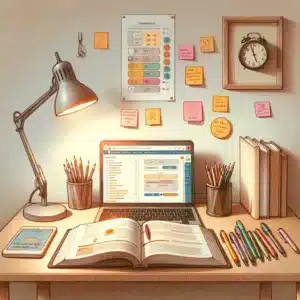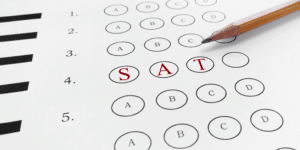Here are a few tips for getting you and your middle-schooler organized, so they can start the school year off right.
***
It’s that time of the year again when millions of students begin to bubble with anticipation at the prospect of heading back to school. Minimize the stress and increase your teen’s chances for success by getting organized.
Here are a few tips for getting you and your middle-schooler organized, so they can start the school year off right.
1. An organized binder:
This will be informed by your child’s personal preference as well as by their school structure, but students generally need binders that make finding specific pages easy. One tip is to have one pocket (or one pocket per subject) as a designated inbox, where all incoming homework will go. Another pocket (or one pocket per subject) can then function as an outbox, where all completed and to-be-handed-in homework will go. This will eliminate having to shuffle through all of the pages of their binder or accordion folder.
Color coding sections of a notebook or binder (e.g., blue = Science; red = Spanish) is another way of speeding up your child’s ability to find the materials they need. Whenever you have two of something (e.g., two binders, two folders) make sure that they are different colors to allow for more efficient access to materials.
Label everything! Dividers should have subject labels, and possibly even sub-labels, like: class notes, study guides, or writer’s workshop. If your child gets a syllabus, you can use this to guide your labeling. Encourage your children to use their binder reliably instead of shoving everything into the pockets at the front or back.
2. A place for everything, and everything in its place:
Whether it requires more pockets in their backpack, or labels on their binders, having a designated location for everything will increase the likelihood that school supplies end up where they belong, day after day. Be explicit and have a conversation with your child about where things should go. Together, pick a time every night or every morning to make sure that everything is where it needs to be. A checklist can help ensure that nothing has been missed.
3. Organization of time:
A monthly and weekly calendar in a central location in the house will really help your children visualize time. Weekly calendars will allow them to see when their extracurriculars are taking place each week, and should encourage them to plan ahead to make sure they can get their homework done in time. In turn, a monthly calendar will help them with visualizing longer projects. Something due two weeks away may sound like a long time away, but when you account for that field trip, those play rehearsals, and that Social Studies test, it’s not as far away as it seems!
Middle schoolers are often still learning how to use their own planners, so your home calendars will serve as a great model. If your child’s school does not provide a planner, buy one or make one, and try to have your child personalize it – this will make them more eager to actually use it.
Have a great school year!
Related Topics:
Getting Organized For Back To School
10 Tips To Improve Your SHSAT Score
8 Math Apps Students Of All Ages Need To Download
How To Help Your Child With Their Private School Admissions Essay
Noodle Pros Middle School Specialists




